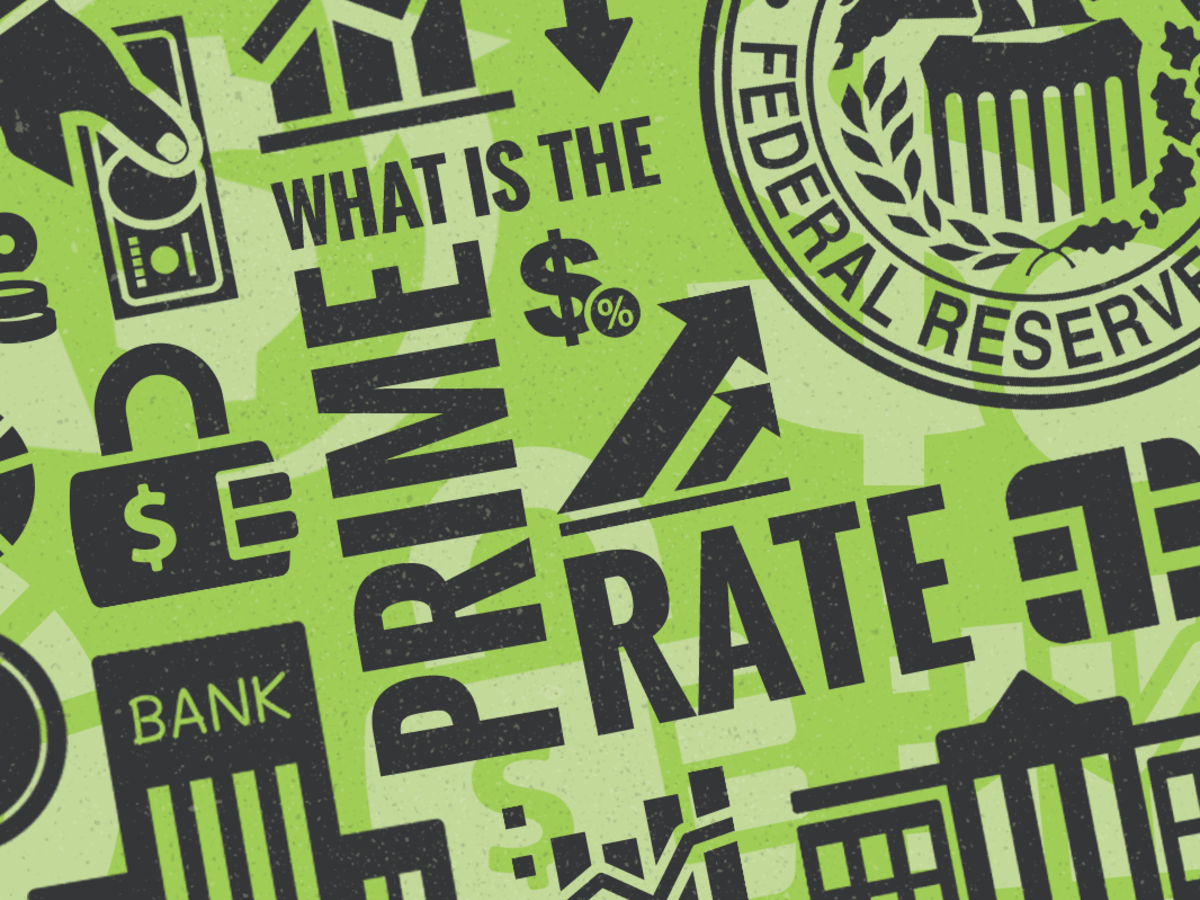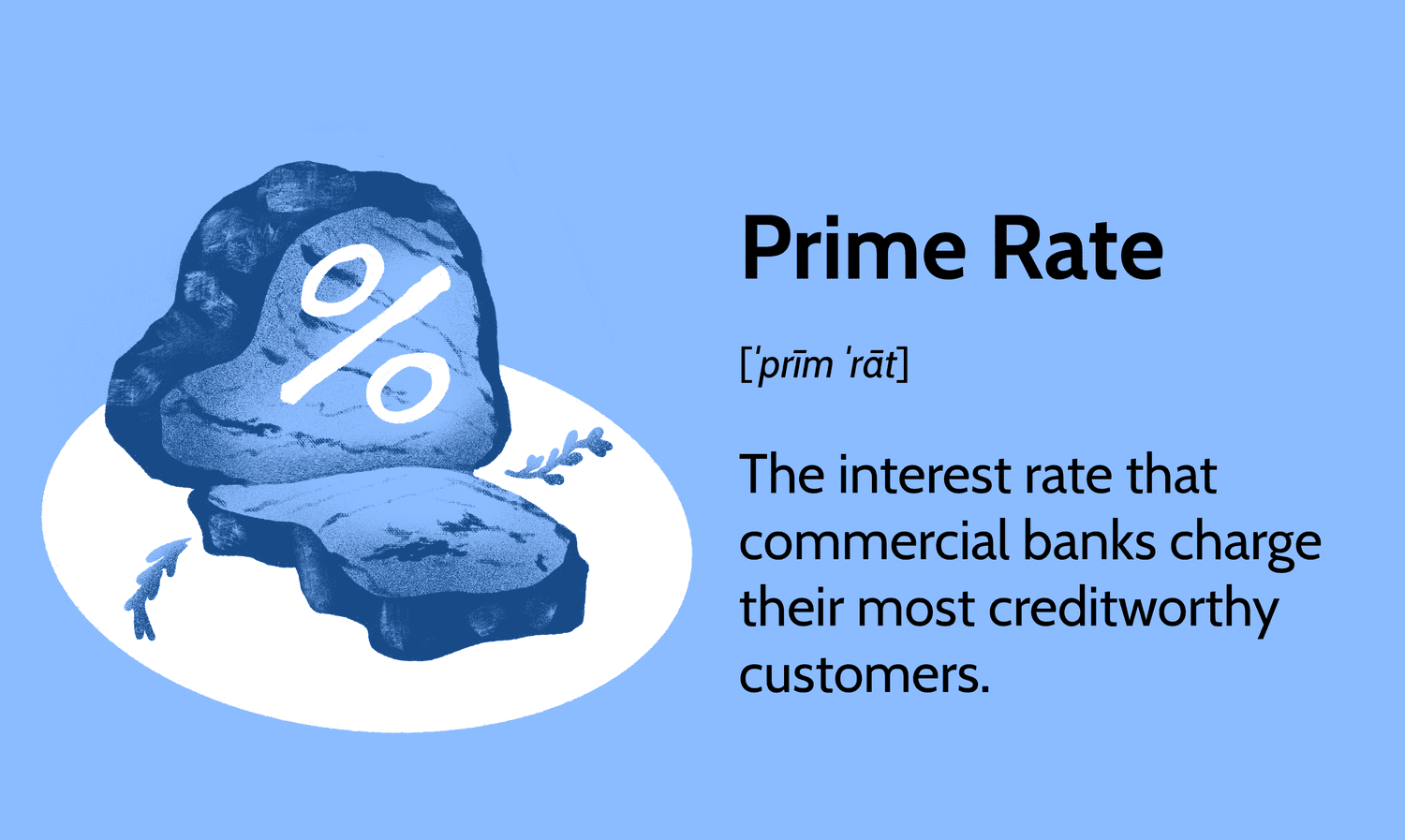Introduction
Welcome to the world of finance, where interest rates play a significant role in shaping the economy. One crucial interest rate that affects borrowers and savers alike is the Prime Lending Rate. Understanding the concept and dynamics of the Prime Lending Rate is essential for anyone looking to make informed financial decisions.
The Prime Lending Rate is the interest rate that banks charge their most creditworthy customers for loans. It serves as a benchmark for other interest rates, including mortgage rates, car loans, and personal loans. It is a vital indicator of the overall health of the economy and helps determine the cost of borrowing money.
In Canada, the Prime Lending Rate is determined by various factors, including the Bank of Canada’s monetary policy, economic conditions, market competition, and financial institution’s operating costs. Monitoring changes in the Prime Lending Rate provides valuable insights into the direction of interest rates and economic trends.
In this article, we will explore the intricacies of the Canadian Prime Lending Rate, how it is determined, and why it holds significance in the financial landscape. We will also examine the impact of changes in the Prime Lending Rate on borrowers and savers, and delve into the historical trends that have shaped the rate over time.
So, fasten your seatbelts as we embark on a journey through the world of Canadian Prime Lending Rate, where finance intersects with everyday life and monetary policies shape our financial decisions.
What is the Prime Lending Rate?
The Prime Lending Rate is the interest rate that banks charge their most creditworthy customers for loans. It serves as a benchmark for other interest rates and is a crucial indicator in the financial industry. This rate influences borrowing costs, determines the affordability of loans, and reflects the overall health of the economy.
In Canada, the Prime Lending Rate is set by individual banks and is typically based on the Bank of Canada’s overnight rate. The overnight rate is the interest rate at which banks lend or borrow money from each other for short periods, usually 24 hours. Banks then add a premium or margin to the overnight rate to determine their Prime Lending Rate.
It’s important to note that the Prime Lending Rate can vary between different financial institutions. This variability is influenced by factors such as the bank’s cost of funds, risk appetite, and competitive forces within the market.
Borrowers with high credit scores and solid financial histories are more likely to be offered loans at the Prime Lending Rate or a rate close to it. This is because they are considered less risky to the lender and have a higher likelihood of repaying the loan.
The Prime Lending Rate is not only relevant for individuals seeking personal loans or mortgages, but also for businesses looking to expand or invest. Access to credit at a favorable interest rate can have a significant impact on a company’s growth and profitability.
Financial institutions and lenders rely on the Prime Lending Rate to determine the pricing of their loan products. Interest rates for different loan types, such as fixed-rate mortgages, variable-rate mortgages, and lines of credit, are often based on a certain percentage above or below the Prime Lending Rate.
By understanding the Prime Lending Rate, borrowers can make informed decisions about their financial affairs. They can assess the affordability of loans, compare rates offered by different banks, and plan for potential changes in interest rates.
In the next section, we will delve deeper into the factors that influence the Canadian Prime Lending Rate, shedding light on the dynamics of interest rate determination.
How is the Canadian Prime Lending Rate determined?
The Canadian Prime Lending Rate is not set by any regulatory body or government entity. Instead, it is determined by individual banks based on a combination of factors. While the Bank of Canada’s overnight rate plays a significant role, other elements come into play when banks set their Prime Lending Rates.
Here are the key factors that influence the determination of the Canadian Prime Lending Rate:
- Bank of Canada’s overnight rate: The overnight rate, set by the Bank of Canada, serves as a benchmark for banks. It represents the interest rate at which financial institutions lend or borrow money from each other on a short-term basis. Banks use this rate as a foundation when setting their own Prime Lending Rate.
- Economic conditions: Banks closely monitor the economic landscape to assess the overall health of the economy. Factors such as inflation, unemployment rates, GDP growth, and consumer spending patterns are taken into consideration when determining the Prime Lending Rate. During periods of economic growth, banks may increase their rates to offset potential risks, whereas in times of economic slowdown, they may decrease rates to stimulate borrowing and spending.
- Cost of funds: Banks need to manage their sources of funding to offer loans. They rely on deposits from customers, bond issuance, and borrowing from other financial institutions. The cost of acquiring these funds affects the Prime Lending Rate. If the cost of funds increases, banks may adjust their rates upward to maintain profitability.
- Risk assessment: Banks carefully evaluate the creditworthiness of borrowers and the associated risk when setting their Prime Lending Rates. Customers with lower credit scores or higher perceived risk may be offered loans at a rate higher than the Prime Lending Rate to compensate for the increased likelihood of default. On the other hand, customers with excellent credit histories and low risk profiles may enjoy lower rates.
- Market competition: Banks operate in a competitive marketplace, striving to attract and retain customers. In an effort to gain a competitive edge, banks may adjust their Prime Lending Rates to offer more favorable terms compared to their competitors. This can lead to variations in rates offered by different banks.
It’s important to note that the factors influencing the Prime Lending Rate may differ among financial institutions. Each bank assesses these factors based on their specific strategies, risk appetite, and market positioning.
By understanding how the Canadian Prime Lending Rate is determined, borrowers and savers can anticipate potential rate changes and make informed decisions. Now, let’s explore the various factors that influence the Prime Lending Rate in Canada and their impact on borrowers and savers.
Factors influencing the Prime Lending Rate in Canada
The determination of the Canadian Prime Lending Rate is influenced by various factors that shape the financial landscape. Understanding these factors can provide insights into the dynamics of interest rate fluctuations and help borrowers and savers make informed decisions. Here are the key factors influencing the Prime Lending Rate in Canada:
- Monetary policy and the Bank of Canada: The Bank of Canada plays a central role in guiding monetary policy and setting the benchmark interest rate, known as the overnight rate. Changes to the overnight rate directly impact the Prime Lending Rate. If the Bank of Canada raises the overnight rate, banks may increase their Prime Lending Rates to reflect the higher borrowing costs, and vice versa.
- Economic conditions: The state of the economy, including factors such as inflation, GDP growth, and unemployment rates, influences the Prime Lending Rate. During periods of economic growth, banks may increase their rates to mitigate potential risks. Conversely, during economic downturns, banks may lower their rates to stimulate borrowing and spending.
- Inflation and purchasing power: Inflation erodes the purchasing power of money over time. Banks consider the expected inflation rate when setting their Prime Lending Rates. To maintain the real value of the interest charged, banks may increase rates if inflation is expected to rise, ensuring that the real return on loans remains positive.
- Cost of funds and borrowing: Banks rely on various sources of funding, including customer deposits and borrowing from other financial institutions. The cost of acquiring these funds significantly affects the Prime Lending Rate. If the cost of funds increases, such as when interest rates on deposits or interbank lending rise, banks may adjust their rates upward to protect profit margins.
- Market competition: Competition among financial institutions plays a role in determining the Prime Lending Rate. Banks strive to attract and retain customers by offering competitive rates. If one bank lowers its Prime Lending Rate, others may follow suit to maintain market share. Conversely, if a bank foresees increased risk or higher operational costs, it may increase its Prime Lending Rate independent of market competition.
- Government policies and regulations: Government policies and regulations can influence interest rates indirectly. For example, changes in legislation that increase capital requirements for banks may lead to higher borrowing costs, which can impact the Prime Lending Rate. Additionally, government initiatives to stimulate the housing market or promote certain sectors of the economy can influence interest rates for specific loan products.
It is important to note that these factors are interconnected and can influence each other. Changes in one factor can have ripple effects throughout the financial system, leading to adjustments in the Prime Lending Rate. Banks carefully assess these multi-faceted factors to determine their Prime Lending Rates, balancing profitability, risk management, and market competitiveness.
Now that we have explored the factors influencing the Prime Lending Rate, let’s examine the important role played by the Bank of Canada in determining this benchmark rate.
Role of the Bank of Canada in determining the Prime Lending Rate
The Bank of Canada plays a crucial role in shaping the Canadian economy and has a significant influence on the determination of the Prime Lending Rate. As Canada’s central bank, it is responsible for maintaining price stability and promoting the economic well-being of the country. Here’s how the Bank of Canada impacts the Prime Lending Rate:
1. Setting the benchmark interest rate: The Bank of Canada sets the benchmark interest rate known as the overnight rate. This rate is the interest rate at which major financial institutions borrow or lend money to each other for short-term periods. Changes in the overnight rate directly impact the borrowing costs for banks, which in turn influences the Prime Lending Rate. When the Bank of Canada raises the overnight rate, banks may increase their Prime Lending Rates to reflect the higher cost of borrowing, and vice versa.
2. Managing monetary policy: The Bank of Canada uses the overnight rate as a tool to manage monetary policy. By adjusting the overnight rate, the bank aims to achieve its inflation target and stabilize the economy. If inflation is rising and the bank wants to curb it, it may increase the overnight rate, which tightens credit conditions and raises borrowing costs, potentially leading to higher Prime Lending Rates. Conversely, during times of economic slowdown, the bank may lower the overnight rate to stimulate borrowing and spending, thereby potentially reducing the Prime Lending Rate.
3. Providing guidance and signaling: The Bank of Canada releases regular communication and statements that provide guidance to financial markets and the public regarding its future monetary policy actions. These statements, along with economic data and indicators, help market participants anticipate potential changes in the overnight rate and, consequently, the Prime Lending Rate. The Bank of Canada’s signals and forward-looking statements influence market expectations and provide valuable insight for borrowers and lenders.
4. Market stability and financial system health: The Bank of Canada closely monitors the stability of the financial system and the overall health of the economy. It assesses risks and vulnerabilities in the financial system and takes actions to mitigate any potential threats. By ensuring the stability of the financial system, the Bank of Canada indirectly influences the Prime Lending Rate by maintaining a stable lending environment and managing risks that could impact borrowing costs.
5. Economic research and analysis: The Bank of Canada conducts extensive economic research and analysis to inform its monetary policy decisions. It closely examines various economic indicators, such as inflation, GDP growth, employment rates, and consumer spending patterns. This research helps the bank assess the current economic conditions and make informed decisions that could impact the overnight rate, and subsequently, the Prime Lending Rate.
The actions and decisions of the Bank of Canada have far-reaching implications for the Canadian economy and the Prime Lending Rate. Monitoring the bank’s policies, signals, and research can help borrowers and savers anticipate potential changes in interest rates and make informed financial decisions.
Now that we understand the role of the Bank of Canada in determining the Prime Lending Rate, let’s explore why this benchmark rate is important in the Canadian financial landscape.
Why is the Canadian Prime Lending Rate important?
The Canadian Prime Lending Rate holds significant importance in the financial landscape, impacting both borrowers and savers. Understanding why this benchmark rate is crucial can help individuals make informed financial decisions. Here are the key reasons why the Canadian Prime Lending Rate is important:
1. Determining borrowing costs: The Prime Lending Rate serves as a benchmark for the interest rates that financial institutions charge on various types of loans, including mortgages, personal loans, and business loans. Changes in the Prime Lending Rate directly affect borrowing costs for individuals and businesses. A higher Prime Lending Rate leads to increased interest expenses and can make loans less affordable, while a lower rate reduces borrowing costs, making loans more accessible.
2. Reflecting the state of the economy: The Prime Lending Rate is influenced by various economic factors and indicators. Therefore, it serves as an indicator of the overall health of the economy. When the economy is thriving, banks may increase their Prime Lending Rates to mitigate potential risks, while during economic downturns, banks may lower rates to stimulate borrowing and economic activity. Monitoring the changes in the Prime Lending Rate provides insights into the current economic conditions.
3. Impact on financial planning: The Prime Lending Rate plays a crucial role in financial planning. For individuals considering major financial decisions, such as buying a home or taking out a loan, changes in the Prime Lending Rate can significantly impact their affordability and long-term financial goals. By understanding the dynamics of the Prime Lending Rate, individuals can plan their finances accordingly, considering potential changes in interest rates and their impact on future repayment obligations.
4. Guide for investment decisions: Investors closely monitor interest rates, including the Prime Lending Rate, as they impact investment opportunities and the overall market sentiment. Changes in the Prime Lending Rate can influence investment strategies across various sectors, particularly those sensitive to borrowing costs, such as real estate and construction. Investors use the Prime Lending Rate as a gauge to assess the potential returns and risks associated with different investment opportunities.
5. Economic indicator for policymakers: The Canadian Prime Lending Rate serves as a critical economic indicator for policymakers and government entities. It provides insights into the cost of credit in the economy and helps policymakers assess the effectiveness of monetary policy measures. Changes in the Prime Lending Rate can influence consumers’ spending habits, investment decisions, and overall financial stability, which policymakers take into account when formulating economic policies.
By understanding the importance of the Canadian Prime Lending Rate, individuals can make informed financial decisions, monitor economic trends, and plan for potential changes in interest rates. The Prime Lending Rate serves as a vital benchmark in the financial world, representing the cost of borrowing and reflecting the pulse of the Canadian economy.
Next, we will explore the direct impact of changes in the Prime Lending Rate on borrowers.
Impact of changes in the Prime Lending Rate on borrowers
Changes in the Canadian Prime Lending Rate have a direct impact on borrowers, influencing their borrowing costs and financial decisions. Understanding how changes in the Prime Lending Rate can affect borrowers is crucial for making informed financial choices. Here are the key impacts of Prime Lending Rate changes on borrowers:
1. Affordability of loans: The Prime Lending Rate directly influences the interest rates charged on various types of loans, including mortgages, personal loans, and credit cards. When the Prime Lending Rate increases, the interest rates on these loans also tend to rise. This translates to higher monthly payments and potentially reduces the affordability of loans. Conversely, a decrease in the Prime Lending Rate can lower borrowing costs and make loans more affordable for borrowers.
2. Adjustable-rate mortgages and variable-rate loans: Borrowers with adjustable-rate mortgages or variable-rate loans are particularly affected by changes in the Prime Lending Rate. These types of loans typically have interest rates that are directly tied to the Prime Lending Rate. When the Prime Lending Rate changes, the interest rates on these loans also adjust accordingly. As a result, borrowers may experience fluctuations in their monthly mortgage or loan payments, depending on whether the Prime Lending Rate increases or decreases.
3. Refinancing opportunities: Changes in the Prime Lending Rate can create opportunities for borrowers to refinance their loans. When the Prime Lending Rate decreases, borrowers with existing loans can take advantage of lower interest rates by refinancing their loans at a reduced rate. This can potentially lead to significant savings on interest payments over the life of the loan.
4. Impact on debt management: Changes in the Prime Lending Rate can affect borrowers’ ability to manage their debts effectively. An increase in the Prime Lending Rate may lead to higher monthly debt payments, putting additional strain on borrowers’ financial situations. It is important for borrowers to anticipate and plan for potential changes in their loan payments, especially if they have variable-rate loans or adjustable-rate mortgages.
5. Consumer spending and borrowing behavior: Changes in the Prime Lending Rate can influence consumers’ spending and borrowing behavior. When interest rates rise, borrowing becomes more expensive, which can lead to a decrease in consumer spending. This reduction in spending can have a broader impact on the economy. Conversely, when interest rates decrease, borrowing becomes more affordable, and consumers may be more inclined to make significant purchases or take on additional loans.
Borrowers need to monitor changes in the Prime Lending Rate and their individual loan terms to stay informed about potential impacts on their borrowing costs. Assessing the affordability of loans, considering refinancing opportunities, and managing debt are all important aspects of navigating changes in the Prime Lending Rate.
Now, let’s explore the impact of changes in the Prime Lending Rate on savers.
Impact of changes in the Prime Lending Rate on savers
Changes in the Canadian Prime Lending Rate can also have a notable impact on savers, influencing their ability to grow their savings and generate income. Understanding how changes in the Prime Lending Rate can affect savers is crucial for making informed financial decisions. Here are the key impacts of Prime Lending Rate changes on savers:
1. Interest on savings accounts: When the Prime Lending Rate increases, financial institutions may also raise the interest rates on savings accounts and other deposit products. This can be beneficial for savers, as it leads to higher interest earnings on their deposited funds. Conversely, a decrease in the Prime Lending Rate may lead to lower interest rates on savings accounts, potentially reducing the income generated from savings.
2. Fixed-income investments: Changes in the Prime Lending Rate can impact the returns on fixed-income investments such as bonds, certificates of deposit (CDs), and annuities. These investment vehicles often provide a fixed interest rate based on prevailing market rates. When the Prime Lending Rate increases, the yields on fixed-income investments tend to rise as well, providing savers with the potential for increased income. Conversely, a decrease in the Prime Lending Rate can lower yields on fixed-income investments, potentially reducing the income generated by these assets.
3. Savings goals and financial planning: For savers working towards specific financial goals, such as buying a home or funding education, changes in the Prime Lending Rate can impact their financial planning. A higher Prime Lending Rate may mean higher borrowing costs, increasing the need for sufficient savings to meet their goals. Conversely, a lower Prime Lending Rate can reduce borrowing costs and ease the financial burden of achieving savings targets.
4. Inflation and purchasing power: Changes in the Prime Lending Rate are often influenced by the Bank of Canada’s monetary policy actions, which aim to address inflation. When the Prime Lending Rate adjusts to control inflation, savers should also consider the impact on the purchasing power of their savings. In times of increasing interest rates, the potential increase in inflation may erode the real value of savings over time. Conversely, in periods of decreasing interest rates, inflation may have a lower impact on purchasing power, potentially preserving the real value of savings.
5. Investment decisions: Changes in the Prime Lending Rate can influence investment decisions for savers. When interest rates are high, it may be more attractive to allocate funds towards interest-bearing investments, such as bonds or deposit products, rather than riskier investments. Conversely, when interest rates are low, savers may explore alternative investment opportunities that provide potentially higher returns, considering the impact of inflation on their savings.
Monitoring changes in the Prime Lending Rate and considering their impact on savings can help savers make informed decisions. Understanding the potential effects on interest earnings, investment returns, and financial planning can contribute to effective wealth management and achieving long-term financial goals.
Now, let’s take a look at the historical trends of the Canadian Prime Lending Rate to identify patterns and influences over time.
Historical trends of the Canadian Prime Lending Rate
Examining the historical trends of the Canadian Prime Lending Rate provides valuable insights into the changing economic landscape and the factors that influence interest rates over time. Understanding these trends can help borrowers, savers, and investors gauge potential patterns and anticipate future changes. Here’s a brief overview of the historical trends of the Canadian Prime Lending Rate:
Throughout the past few decades, the Canadian Prime Lending Rate has experienced fluctuations in response to various economic and market conditions. In the 1980s and early 1990s, Canada faced high inflation rates and rising interest rates. During this period, the Prime Lending Rate reached record highs, peaking at over 20%. These high rates were implemented to combat inflation and stabilize the economy.
In the late 1990s and early 2000s, the Prime Lending Rate gradually declined as the Canadian economy entered a period of relative stability and lower inflation. This decline was driven by factors such as improved monetary policy, sound fiscal management, and global economic trends.
The 2008 financial crisis had a significant impact on the Prime Lending Rate, as central banks worldwide, including the Bank of Canada, implemented measures to mitigate the effects of the crisis. In response to the crisis, the Bank of Canada aggressively lowered the overnight rate, leading to a substantial decrease in the Prime Lending Rate. This decline helped stimulate borrowing and economic growth during a challenging period.
In the years following the financial crisis, the Prime Lending Rate remained relatively low as central banks adopted accommodative monetary policies to support economic recovery. However, as the economy improved, the Bank of Canada slowly began raising the overnight rate, resulting in gradual increases in the Prime Lending Rate.
In recent years, the Prime Lending Rate has remained relatively stable and at historically low levels. The Bank of Canada has maintained a cautious approach to interest rate adjustments, carefully weighing economic indicators and potential risks. This stability has provided borrowers with favorable borrowing conditions, while savers have faced lower interest rates on their savings accounts and fixed-income investments.
It is important to note that historical trends are not indicative of future rate movements. The Prime Lending Rate is influenced by various factors, and its trajectory can change based on shifts in economic conditions and monetary policy decisions.
Monitoring historical trends in the Prime Lending Rate can provide valuable insights for borrowers, savers, and investors. Understanding past patterns and influences can help individuals make informed financial decisions and better navigate potential future changes in interest rates.
Now that we have explored the historical trends, let’s conclude by summarizing the key takeaways from this article.
Conclusion
The Canadian Prime Lending Rate plays a vital role in the financial landscape, influencing borrowing costs, savings returns, and overall economic conditions. Understanding the dynamics of the Prime Lending Rate is crucial for individuals and businesses when making important financial decisions.
We have explored the concept of the Prime Lending Rate and its significance in Canada. It serves as a benchmark for interest rates on loans, reflecting the cost of borrowing and the health of the economy. The Prime Lending Rate is influenced by factors such as the Bank of Canada’s monetary policy, economic conditions, market competition, and the cost of funds for financial institutions.
Changes in the Prime Lending Rate directly impact borrowers, affecting the affordability of loans, adjustable-rate mortgages, and variable-rate loans. Savers are also affected by changes in the Prime Lending Rate, impacting interest earnings on savings accounts and returns on fixed-income investments.
Monitoring historical trends provides insights into the evolving economic landscape and can help individuals anticipate potential future changes in interest rates. It is important to consider various factors, such as inflation, economic conditions, and monetary policy decisions, when assessing the potential direction of the Prime Lending Rate.
By understanding the Prime Lending Rate and its impact, individuals can make informed financial decisions, plan for potential changes in interest rates, and manage their borrowing and savings effectively. Financial institutions, policymakers, and investors also closely monitor the Prime Lending Rate to gauge market conditions and make informed decisions.
As the Canadian financial landscape continues to evolve, the Prime Lending Rate will remain a critical indicator of borrowing costs and economic conditions. Staying informed, monitoring trends, and considering the impact of changes in the Prime Lending Rate are key to navigating the ever-changing financial landscape.
So, whether you are a borrower seeking a loan or a saver looking to grow your wealth, understanding the Canadian Prime Lending Rate will empower you to make informed financial decisions and navigate the complexities of the financial world with confidence.

























